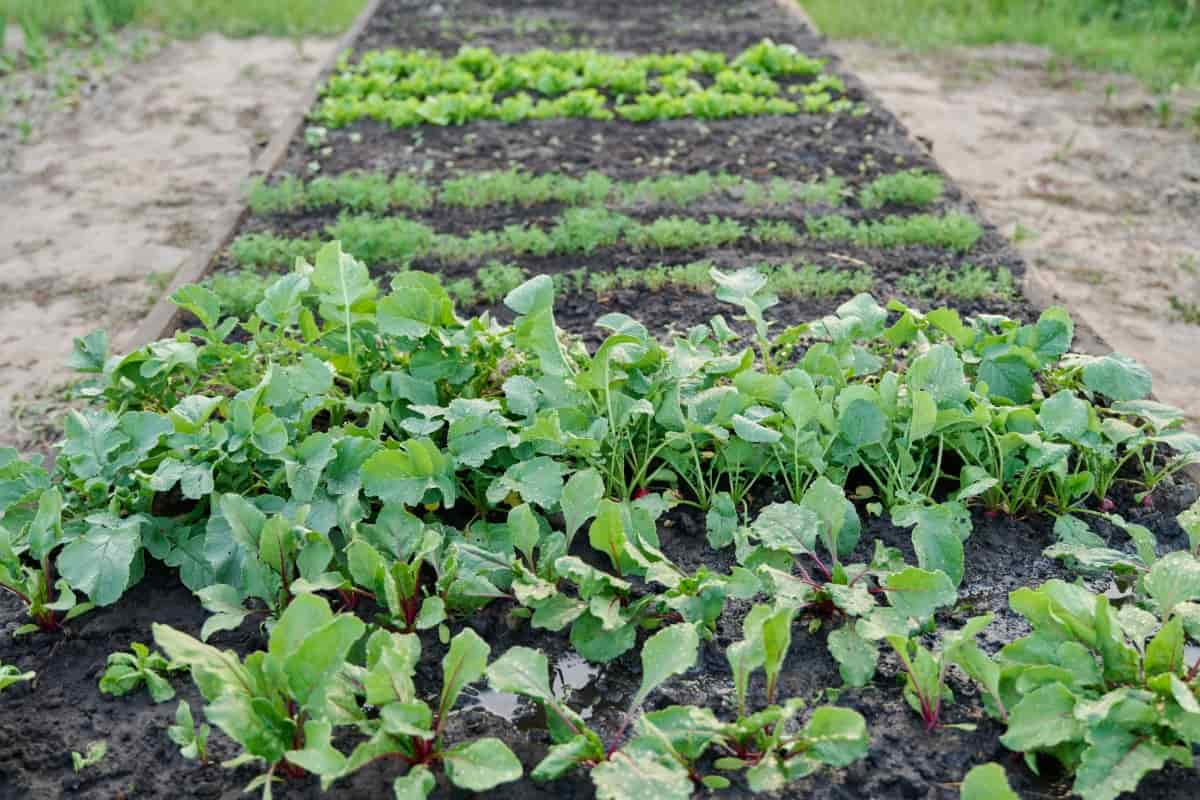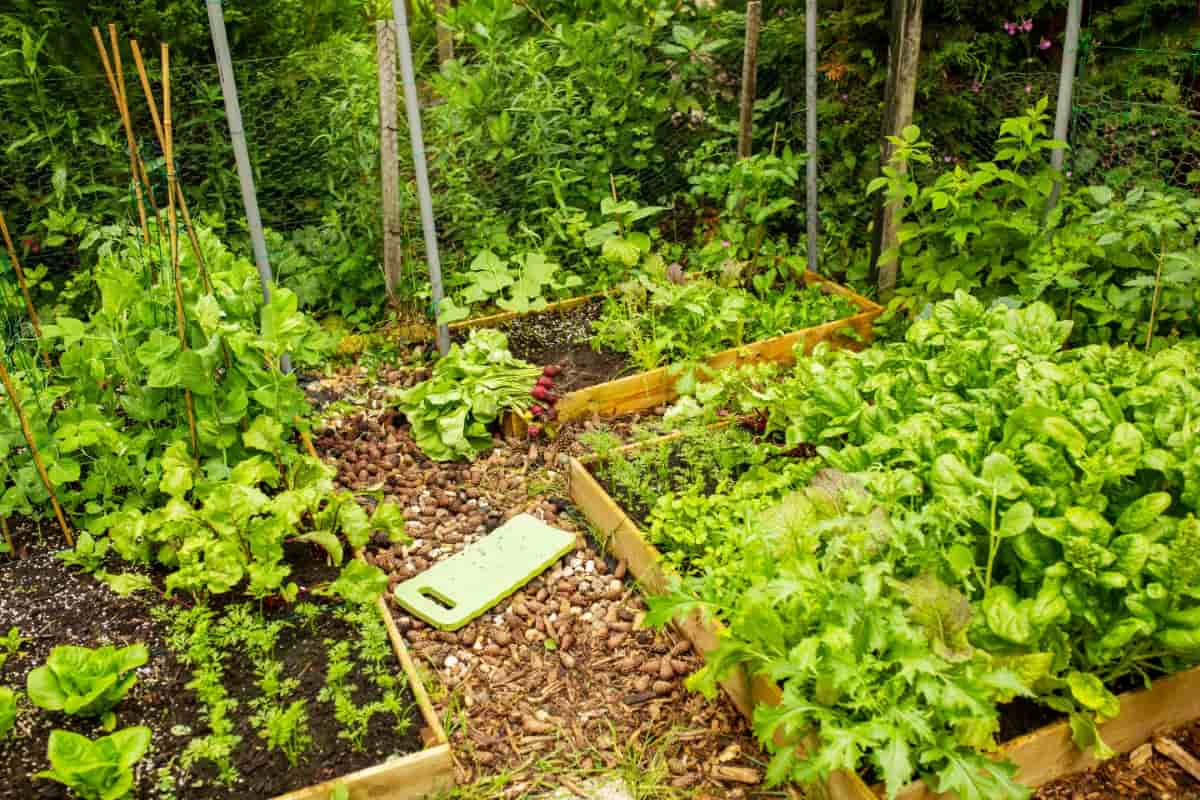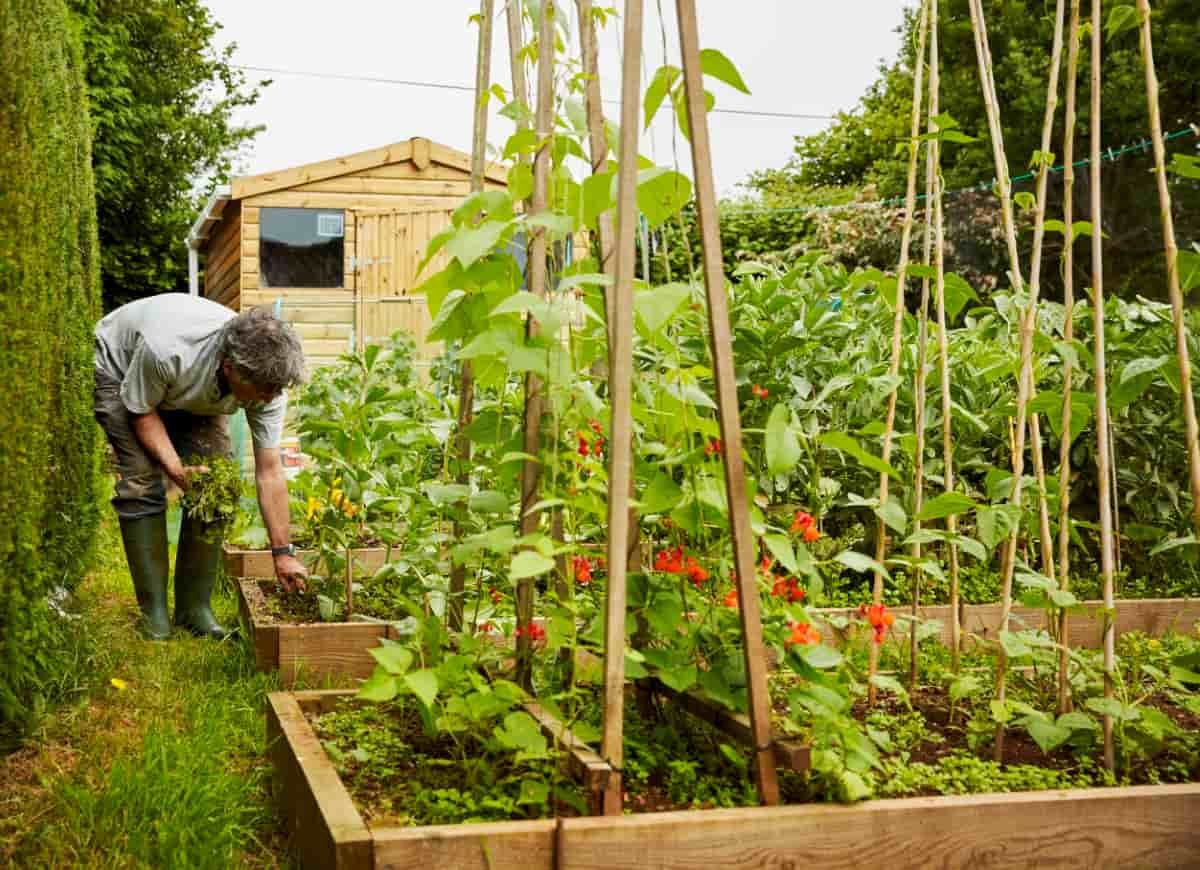Succession Planting is a key strategy to attain consistent yields in gardening, where bountiful produce and vibrant blooms are the ultimate rewards. It refers to a gardening method that optimizes space and timing to generate continuous harvest throughout the season. This method involves planting different crops in the same area multiple times within one growing season.

For instance, as early crops like lettuce and radishes finish their cycle, they can be replaced by heat-loving tomatoes and peppers. This clever gardening technique is not limited to vegetables; it’s also applicable to flowers, making your garden an ever-changing canvas of colors and textures. Now let’s dive deeper and explore this technique’s importance, benefits, and guidelines.
Succession Planting
What Is Succession Planting and Why Is It Important?
Succession Planting maximizes yield by planting different crops in the same space during the growing season. It is the act of planting new crops to replace those that have finished their growing cycle. This strategy is important because it ensures a continuous harvest, maintains soil health by preventing erosion, suppresses weeds by keeping the ground covered, and enhances biodiversity, which can discourage pests.
For example, planting and following radishes with beans is a typical succession planting example. This practice is pivotal in vegetable and flower gardening, ensuring a constant, varied yield.
Benefits of Succession Planting in Vegetable Gardening
Succession planting in vegetable gardening has many benefits. It maximizes garden productivity by ensuring that every inch of the garden is utilized throughout the growing season. This leads to a continuous supply of fresh produce rather than a glut of vegetables all at once, which can often be overwhelming and lead to waste. It also aids in maintaining soil health as different crops extract different nutrients, reducing the likelihood of soil exhaustion. In addition, introducing a diverse range of crops makes the garden less vulnerable to pests and diseases that can wipe out a monocrop.
How to Plan a Succession Planting Schedule
Creating a succession planting schedule involves consideration of several factors, including the crop’s growth cycle duration, temperature requirements, and space availability. Start by selecting crops that have different maturity times. Early-maturing crops like radishes, spinach, and lettuce can be followed by slower-growing crops like tomatoes and corn.
To determine the appropriate planting times, note your area’s average first and last frost dates. Sketch out your garden space, factoring in each crop’s size and growth habit. Don’t forget to consider vertical space – climbing plants like beans, cucumbers, and squash can be used to capitalize on this often overlooked dimension.
Choosing the Right Crops for Succession Planting
The selection of crops is critical in succession planting. The best vegetables for succession planting have relatively short growing seasons and can be harvested multiple times, such as lettuce, radishes, and beans. Meanwhile, crops like tomatoes, cucumbers, and zucchini can follow these early crops. Regarding flowers, annuals like marigolds, cosmos, and zinnias are excellent choices due to their continual blooming habit. Consider crops that can tolerate cooler temperatures in the early and late parts of the season and heat-tolerant ones for the peak summer months.
Tips for Successful Succession Planting in Small Spaces
Even in small spaces, succession planting can be highly successful. The key is to make the most of the available space and to keep the soil productive. Use vertical gardening techniques to grow climbers like beans, peas, and cucumbers. Container gardening is another option for crops like tomatoes and peppers, which can be easily moved around. Utilize every square inch by intercropping – planting a fast-growing crop alongside a slower one. For instance, radishes can be grown alongside slower-maturing carrots, allowing two crops in one space.
Implementing Crop Rotation in Succession Planting
Crop rotation plays a significant role in succession planting. It involves rotating different crops through various garden sections over successive seasons to avoid depleting the soil of specific nutrients and to disrupt the life cycle of pests and diseases. To implement it, divide the garden into sections and rotate the crops from one section to the other each year. For example, follow nitrogen-fixing legumes like peas and beans with heavy feeders like tomatoes and peppers to take advantage of the nitrogen in the soil.
In case you missed it: Raised Bed Watering System: How to Improve Drainage in Your Raised Bed Gardens

Managing Pests and Diseases in Succession Planting
One of the benefits of succession planting is that it can aid in managing pests and diseases. By rotating crops and maintaining a diversity of plants, the life cycles of pests and diseases can be disrupted, reducing their impact. When planning your succession planting, consider including crops known for their pest-repellent properties, such as marigolds or garlic. However, vigilance is required to identify and address any emerging issues quickly. Hand-picking pests and applying organic pest control methods can help keep your garden healthy.
Watering and Fertilizing Techniques for Succession Planting
In succession planting, each crop’s watering and fertilizing needs must be carefully considered. Newly planted crops will require regular watering until they become established, while mature crops might need less frequent but deeper watering. As for fertilizing, fast-growing crops like lettuce and radishes will benefit from a high-nitrogen fertilizer to promote rapid leaf growth. In contrast, fruiting crops like tomatoes and peppers require a balanced fertilizer to support foliage and fruit production. Use organic mulch to help retain soil moisture and suppress weeds.
Harvesting Strategies for Succession-Planted Crops
The timely harvest of succession-planted crops is crucial for maintaining a continuous yield. Promptly harvesting mature crops makes room for the next crop in the sequence. Also, many crops, such as beans, zucchini, and tomatoes, will produce more if regularly harvested. For some crops like lettuce and spinach, a “cut-and-come-again” method can be applied where outer leaves are harvested, allowing the plant to continue producing.
Succession Planting Vs. Traditional Gardening Methods: A Comparison
While traditional gardening often involves planting a single crop in a space for the growing season, succession planting offers a more efficient use of space and resources. In traditional gardening, once a crop is harvested, its occupied space may remain empty for the rest of the season.
In case you missed it: Raised Bed Vegetable Garden Layout Design: Plan, Spacing, and Key Principles

In contrast, succession planting utilizes this space by growing another crop. This approach leads to a higher yield over the growing season and a productive garden for a longer period. It also contributes to better pest management, soil health, and biodiversity than traditional methods. With careful planning and execution, succession planting can transform your garden into a more productive, vibrant, and resilient space.
Conclusion
Succession Planting represents a powerful strategy in gardening that maximizes yield, promotes biodiversity, enhances soil health, and offers an aesthetic charm. It requires careful planning, meticulous scheduling, and diligent management, but the rewards are worth the effort.
- Feed Your Flock for Less: Top 10 Tips to Save on Chicken Feed
- Ultimate Guide to Ossabaw Island Hog: Breeding, Raising, Diet, and Care
- Hatching Answers: The Top 10 Reasons Your Chickens Aren’t Laying Eggs
- Eggs and Economics: Breaking Down the Cost of Raising Backyard Chickens
- Defend Your Greens: Proven Methods to Keep Iguanas Out of Your Garden
- Ultimate Guide to Cinnamon Queen Chicken: A Comprehensive Guide for Beginners
- Ultimate Guide to California Tan Chicken: Breeding, Raising, Diet, Egg-Production and Care
- Ultimate Guide to Marsh Daisy Chicken: Breeding, Raising, Diet, and Care
- 10 Types of Chicken Farming Businesses You Can Start for Profits